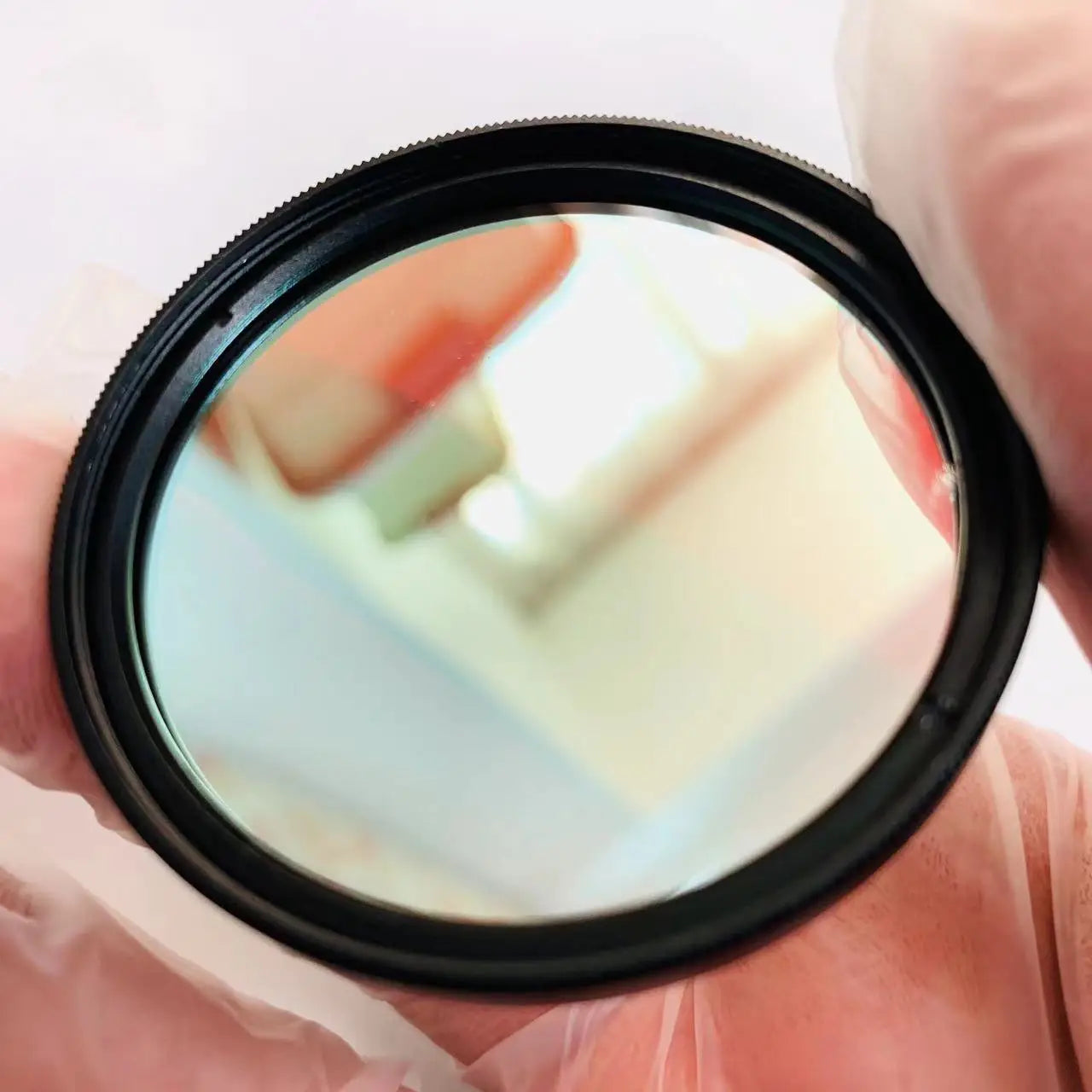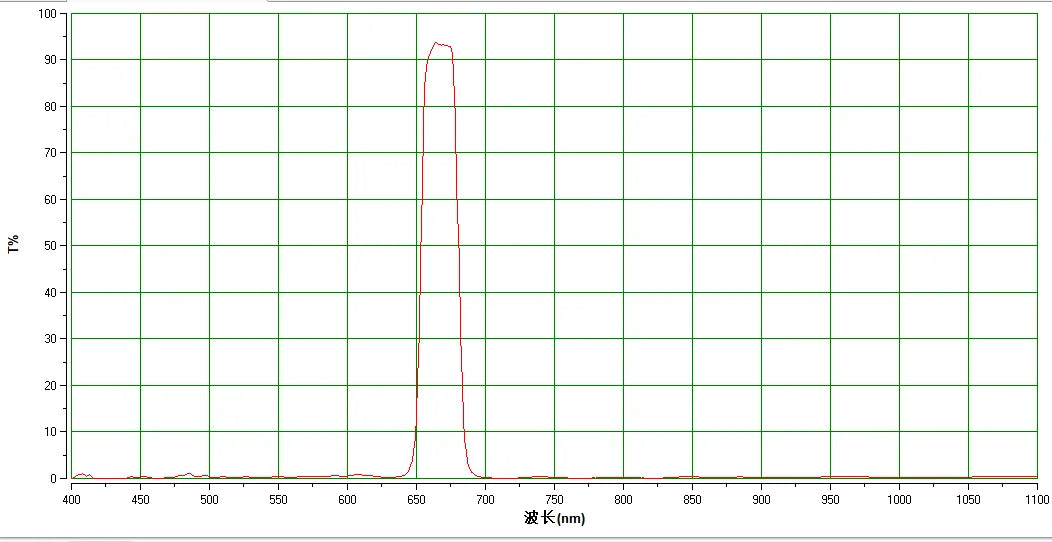Astrophotography Filter
SII Filter for DSLR Camera
SII Filter for DSLR Camera
FREE SHIPPING
Couldn't load pickup availability
SII Filter for DSLR Camera
Introduction
Unleash the full potential of your astrophotography with the SII Filter for DSLR Camera, designed for capturing the intricate details of distant galaxies and nebulae with unparalleled precision and clarity. This filter, crafted with cutting-edge technology, is a testament to quality and innovation, making it an essential tool for discerning astrophotographers. Whether you're a professional or an enthusiast, the SII Filter helps you uncover the mysteries of the cosmos, revealing celestial phenomena that go beyond what is visible to the naked eye or standard camera equipment.
Features
Precision Engineering
The SII Filter for DSLR Camera is meticulously engineered to capture specific emissions from celestial objects, particularly those in the deep sky such as nebulae and distant galaxies. It boasts a precise 672nm wavelength that enhances the visibility of intricate details, allowing you to delve deep into the wonders of the universe.
Narrow-Band High Pass Design
This filter features a narrow-band high pass design that focuses on precise wavelengths, minimizing unwanted light interference and accentuating the unique features of distant cosmic phenomena. This ensures that your astrophotography captures are sharp, detailed, and true to the celestial beauty of the night sky.
Durable Construction
Constructed with a robust metal frame, the SII Filter guarantees durability and stability during your astrophotography sessions. It withstands the rigors of outdoor use and prolonged exposure to celestial phenomena, ensuring that your gear remains protected and reliable.
High-Quality Optical Glass
Crafted from high-quality optical glass, the SII Filter ensures exceptional clarity and precision in image capture. This allows you to produce stunning, detailed images that showcase the celestial beauty with unmatched accuracy.
Versatile Compatibility
Available in sizes ranging from 49mm to 82mm, including the popular 77mm size, the SII Filter caters to a wide array of camera lenses. This ensures compatibility and versatility in your cosmic explorations, making it a versatile addition to your astrophotography toolkit.
Not for Solar Use
It is important to note that the SII Filter is not intended for solar photography. This precaution ensures user safety and prevents potential damage to your equipment.

Detailed Specifications
- Wavelength: 672nm
- Type: Narrow-Band High Pass Filter
- Frame Material: Metal
- Optical Glass: High-quality optical glass
- Available Sizes: 48mm, 49mm, 52mm, 55mm, 58mm, 62mm, 67mm, 72mm, 77mm, 82mm
- Astrophotography Focus: Specifically designed for camera astrophotography
- Not for Solar Use: Ensures safety and equipment protection
Applications
The SII Filter for DSLR Camera is tailored specifically for astrophotography, making it an indispensable tool for capturing the beauty of the night sky. Here are some key applications:
Astrophotography
Astrophotographers will find the SII Filter invaluable for capturing stunning images of celestial objects. Its precise 672nm wavelength enhances the visibility of nebulae and galaxies, revealing details that are often hidden from view.
Celestial Object Observation
For those who enjoy observing celestial objects, the SII Filter offers a clear and detailed view of the night sky. It minimizes light pollution and interference, providing a pristine view of distant stars and cosmic phenomena.
Detailed Galaxy and Nebulae Imaging
The SII Filter is perfect for imaging detailed structures within galaxies and nebulae. By filtering out unwanted light and emphasizing specific emissions, it allows you to capture the intricate beauty of these distant objects.
Package Contents
When you purchase the SII Filter for DSLR Camera, you will receive:
- 1 x SII Filter for DSLR Camera
- 1 x Protective Case
Where SII Usually Found in Space?
Sulfur-II (SII) is typically found in space within ionized gas regions, particularly in areas where star formation is active or has recently occurred. Here are some common locations where SII can be observed:
1. Emission Nebulae
Emission nebulae are clouds of ionized gas that emit light of various colors. These nebulae are often found in regions of active star formation. The high-energy radiation from young, hot stars ionizes the surrounding gas, causing it to glow. SII is commonly found in these regions, particularly in the ionized gas that surrounds new stars. The specific emission line of SII, at a wavelength of 672 nm, is often observed in these nebulae.
2. HII Regions
HII regions are large clouds of gas and plasma that have been ionized by ultraviolet light from high-mass, young stars. These regions are named after the ionized hydrogen they contain (HII refers to ionized hydrogen). SII emission is a significant component of the spectra of HII regions, contributing to the characteristic red color of these regions in many astronomical images.
3. Planetary Nebulae
Planetary nebulae are formed when a star at the end of its life expels its outer layers into space, leaving behind a hot core that ionizes the ejected material. The glowing shell of ionized gas often contains SII, which can be detected through its emission lines. Planetary nebulae are rich in various ionized gases, including sulfur, oxygen, and nitrogen.
4. Supernova Remnants
Supernova remnants are the expanding shells of gas and dust resulting from the explosion of a star in a supernova event. These remnants contain a variety of ionized elements, including sulfur. The shock waves from the supernova explosion ionize the surrounding material, causing it to emit radiation at various wavelengths, including the SII emission line.
5. Diffuse Ionized Gas (DIG)
Diffuse ionized gas is a widespread component of the interstellar medium, found in the spaces between stars in galaxies. It is ionized by the cumulative effect of radiation from many stars. SII emission is observed in the diffuse ionized gas, contributing to our understanding of the overall ionization state and composition of the interstellar medium.
6. Star-Forming Regions
Star-forming regions, such as the famous Orion Nebula (M42), are hotbeds of activity where new stars are being born. These regions are rich in ionized gases, including SII. The intense radiation from newly formed stars ionizes the surrounding material, leading to the characteristic emission lines observed in these regions.
Sulfur-II is an important component of the ionized gas found in various astronomical environments. By studying the SII emission lines, astrophotographers and astronomers can gain valuable insights into the physical conditions, chemical composition, and processes occurring in these regions.
Popular Sulfur-II (SII) Targets for Astrophotography
Sulfur-II (SII) is an important emission line in astrophotography, particularly for imaging certain types of nebulae and star-forming regions. The SII filter captures light at a wavelength of 672 nm, which is emitted by ionized sulfur atoms. This allows astrophotographers to highlight specific structures within these celestial objects. Here are some popular targets for SII imaging:
1. The Orion Nebula (M42)
Location: Constellation Orion
Description: The Orion Nebula is one of the brightest and most well-known nebulae in the night sky. It is a massive star-forming region located about 1,344 light-years from Earth. The nebula contains a high concentration of ionized gases, including sulfur, making it an ideal target for SII imaging. The intricate details of the gas and dust clouds can be beautifully captured with an SII filter.
2. The Eagle Nebula (M16)
Location: Constellation Serpens
Description: Famous for the "Pillars of Creation" feature, the Eagle Nebula is a region of active star formation approximately 7,000 light-years away. The SII emissions in this nebula highlight the dense regions of gas and dust where new stars are being born. The SII filter helps to reveal the fine structures within these pillars and the surrounding nebula.
3. The Lagoon Nebula (M8)
Location: Constellation Sagittarius
Description: The Lagoon Nebula is a large emission nebula located about 4,100 light-years from Earth. It is rich in hydrogen, sulfur, and oxygen, making it an excellent target for narrowband imaging. The SII filter can capture the detailed structures within the nebula, emphasizing the regions where ionized sulfur is prevalent.
4. The Trifid Nebula (M20)
Location: Constellation Sagittarius
Description: The Trifid Nebula is a unique combination of an emission nebula, a reflection nebula, and a dark nebula. Located about 5,200 light-years away, it is a complex target with rich detail. The SII emissions highlight the areas of active star formation and ionized gas, providing a deeper look into its complex structure.
5. The Crab Nebula (M1)
Location: Constellation Taurus
Description: The Crab Nebula is a supernova remnant located about 6,500 light-years from Earth. It is the result of a supernova explosion observed in 1054 AD. The nebula is a rich source of SII emissions, which can be captured to reveal the filamentary structures of ionized gas expanding outward from the explosion.
6. The Rosette Nebula (Caldwell 49)
Location: Constellation Monoceros
Description: The Rosette Nebula is a large, circular HII region located about 5,200 light-years from Earth. The SII filter is particularly useful in capturing the intricate structures and star-forming regions within the nebula. The combination of SII, H-alpha, and OIII data can create stunning images showcasing the nebula's beauty.
7. The Veil Nebula
Location: Constellation Cygnus
Description: The Veil Nebula is a supernova remnant that consists of several parts, including the Eastern Veil (NGC 6992) and the Western Veil (NGC 6960). It is located about 2,400 light-years away. SII imaging of the Veil Nebula can reveal the fine, filamentary structures of ionized gas, providing insight into the remnants of the supernova explosion.
8. The Heart Nebula (IC 1805)
Location: Constellation Cassiopeia
Description: The Heart Nebula is an emission nebula located about 7,500 light-years from Earth. It is part of a larger complex that includes the Soul Nebula. The SII filter can capture the rich details of ionized sulfur within the nebula, highlighting the regions of active star formation and the intricate structures of the gas clouds.
9. The Soul Nebula (IC 1848)
Location: Constellation Cassiopeia
Description: Located near the Heart Nebula, the Soul Nebula is another region of active star formation. It is rich in ionized gases, including sulfur, making it a great target for SII imaging. The filter helps to bring out the details of the nebula's structure and star-forming regions.
10. The Pelican Nebula (IC 5070)
Location: Constellation Cygnus
Description: The Pelican Nebula is an emission nebula located about 1,800 light-years from Earth. It is part of the same molecular cloud complex as the North America Nebula. The SII filter is useful in capturing the fine details of the ionized gas structures within the nebula, providing a detailed look at the star formation processes occurring there.
Why Choose the SII Filter?
The SII (Sulfur-II) Filter is specifically designed for camera astrophotography, allowing photographers to focus on precise wavelengths of light emitted by celestial objects. By filtering out unwanted light interference and emphasizing specific emissions, such as those at the 672nm wavelength characteristic of sulfur emissions, the SII Filter enables astrophotographers to capture stunning images with enhanced clarity and detail.
The SII Filter helps reveal the hidden beauty of the cosmos beyond what is visible to the naked eye or standard camera equipment, making it an indispensable tool for enthusiasts and professionals alike in their exploration of the night sky.
Order Now
Unlock the full potential of your astrophotography with the SII Filter for DSLR Camera. This high-precision filter is your gateway to capturing the intricate details of nebulae, galaxies, and other celestial objects with unmatched clarity and accuracy. Designed for both professional photographers and passionate enthusiasts, the SII Filter's narrow-band high pass design and 672nm wavelength focusing bring out the unique features of the cosmos that are often hidden from view. Durable, versatile, and easy to use, this filter is compatible with a wide range of camera lenses, making it a valuable addition to your astrophotography toolkit. Don't miss the chance to reveal the hidden beauty of the night sky. Order your SII Filter for DSLR Camera today and take your cosmic explorations to new heights.
Share












